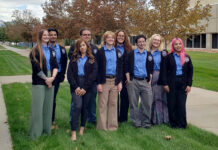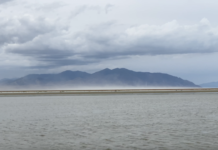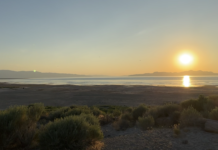
Yellow, gray, dirty air. That is what is commonly found outside on the coldest days of winter and on the hottest days of summer in the Wasatch Valley. Nobody likes it, but many believe there isn’t that much that can be done.
The health effects of pollution, especially during an inversion, are well-documented and -studied according to Professor Jim VanDerslice, Ph.D. of the Department of Family & Preventive Medicine at the University of Utah School of Medicine.
“As far as air quality being a public health problem, I certainly agree with it,” says VanDerslice.
However, he tends to stay out of the way when it comes to joining organizations.
“I try to do research on this, and sometimes, there is a bit of a perceived conflict when you’re involved with something that is a political effort that clearly has an agenda on one side,” says VanDerslice. It is necessary to choose carefully one’s involvements, and for him, continued research will make the biggest difference.
Environmental and political groups have been popping up over the last few years concerned about the health effects of Utah’s smog. They believe something can be done.
Salt Lake Community College has a sustainability group that focuses on the community garden and recycling.
Utah Physicians for Healthy Environments is pushing for Governor Herbert to impose more restrictions on industries.
Mormon Environmental Stewardship is still so new that the members are trying to solidify their purpose, but they know that air quality is part of it.
Utah Tar Sands Resistance is concerned about the air but also about other environmental issues.
HEAL Utah, Peaceful Uprising and Utah Moms for Clean Air also focus their efforts on different aspects of cleaning the air.
These groups provide information to help individuals and companies to adopt habits that lessen air pollution. They also help lead reforms with petitions and raised voices.
Students who want to breathe cleaner air are able to join the organization that aligns with their values.
Two types of pollutants that are particularly concerning are ozone and particulate pollution.
The Air Now website, run by the Environmental Protection Agency (EPA), lists at-risk groups that that are affected more by poor air quality, and children are on that list.
“It definitely affects the children and teachers. However, children need to go outside; sometimes, we let them,” says Cindy Hill, Director of The Avenues Preschool, about keeping children inside during inversion periods.
Inversion is a natural occurrence in the Salt Lake Valley due to being closely surrounded by mountains and the Great Salt Lake.
Inversion is not the same as pollution. It helps trap pollution, but pollution comes from man-made sources.






